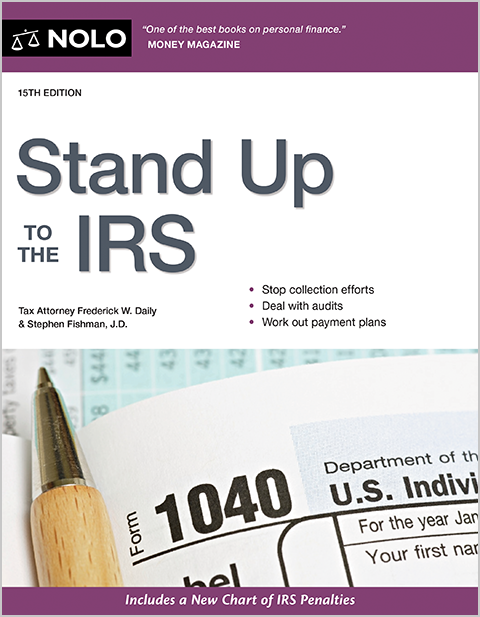Everything employers need to know about paying unemployment insurance taxes in Texas.
If your small business has employees working in Texas, you'll need to pay Texas unemployment insurance (UI) tax. The UI tax funds unemployment compensation programs for eligible employees.
In Texas, state UI tax is one of the primary taxes that employers must pay. Unlike most other states, Texas does not have state withholding taxes. However, other important employer taxes not covered here include federal UI and withholding taxes.
Different states have different rules and rates for UI taxes. Here are the basic rules for Texas's UI tax. (Note that Texas often refers simply to "unemployment tax" rather than "unemployment insurance tax.")
Rules for Unemployment Insurance Tax Liability
In Texas, most for-profit employers are liable for state UI taxes as soon as they have either:
- paid $1,500 or more in total gross wages in a calendar quarter, or
- at least one employee during 20 different weeks in a given calendar year regardless of the wages (the employee does not have to be the same person for 20 weeks, and it doesn't matter if the employee is full-time or part-time).
These are effectively the same rules that apply for liability under the Federal Unemployment Tax Act (FUTA). Different rules, not covered here, apply to agricultural (farm) workers, domestic (in-home) workers, and some (but not all) non-profit organizations.
Generally, state UI tax payments can be credited against your FUTA taxes.
Register With the Texas Workforce Commission
As a Texas employer subject to UI tax, your small business must register with the Texas Workforce Commission (TWC) so you can obtain a TWC tax account number. You must register with the TWC within ten days of becoming liable for UI tax.
The TWC prefers you register online, but you can also register by mail. To register online, go to the Unemployment Tax Registration section of the TWC website. The process should take about 20 minutes.
To register by mail, use Form C-1, Status Report. (Farm and ranch employers use a different form.) You can download a blank Form C-1 from the TWC website. Once registered, you'll be issued a tax account number. There is no fee to register your business with TWC.
Wage Base and Tax Rates
State UI tax is paid on each employee's wages up to a maximum annual amount. That amount is known as the "taxable wage base" or "taxable wage limit." For many years, the limit in Texas has been $9,000 (current as of 2024). However, that amount could change.
There is also a method for determining the state UI tax rate specifically for new employers. Like the taxable wage limit, the method and associated rates are subject to change. However, as of 2024, the rate is the higher of:
- the average tax rate for each industry as assigned by the North American Industry Classification System (NAICS), or
- 2.7%.
The federal government created the NAICS to classify and analyze statistics for different kinds of businesses. Texas, however, uses the average tax rate for each of these kinds of businesses (industries) to assign a UI tax rate to new employers.
Established employers are subject to a lower or higher rate than new employers depending on an "experience rating." This means, among other things, the amount of wages your business has paid and whether it has ever had any employees who made claims for state unemployment benefits. In recent years, rates for established employers have ranged from below 1% to above 7%, with an average generally below 2%.
File Scheduled Tax Reports and Payments
In Texas, UI tax reports and payments are due a month after the close of each calendar quarter. In other words, UI tax reports are due by the following dates:
|
For Wages Paid During |
Calendar Quarter Ends |
Due |
Must be Filed & Paid By |
|
Jan, Feb, Mar |
March 31 |
April 1 |
April 30 |
|
Apr, May, Jun |
June 30 |
July 1 |
July 31 |
|
Jul, Aug, Sep |
September 30 |
October 1 |
October 31 |
|
Oct, Nov, Dec |
December 31 |
January 1 |
January 31 |
If the due date for a report or tax payment falls on Saturday, Sunday, or a legal holiday on which TWC offices are closed, reports and payments are considered timely if they are received on or before the following business day.
Unless you have received a hardship waiver from the TWC, you must file your reports and make payments online. A hardship waiver is granted to employers who either:
- do not have a computer, or
- do not have access to the internet.
For additional information about waivers or filing your report, or paying your taxes electronically, contact your nearest tax office.
How to File Online
The TWC offers two options for online filing:
Unemployment Tax Services is an online reporting and payment system. QuickFile is a wage reporting program you can install on your computer. Software is also available through Intuit, a private company, that allows you to upload wage reports based on information in a payroll record.
Larger employers are required to pay by Electronic Funds Transfer (EFT). Other employers generally can pay by any of three methods:
- Automated Clearing House (ACH) debit from a bank account
- Electronic Funds Transfer (EFT), or
- credit card.
You can make payments online through Unemployment Tax Services or the TEXNET Electronic File Transfer system. Paying by check, money order, or cash is only an option for employers with a hardship waiver from the TWC.
Post a Notice (Poster)
You must post a notice (poster) regarding state UI claims (and Texas payday laws) in a conspicuous place for all employees. The poster provides basic information about who employees should contact at the TWC if they become unemployed, as well as basic information about the Texas Payday Law.
You can download a notice from the Posters section of the TWC website that meets all legal requirements.
Do Not Misclassify Employees as Independent Contractors
Employers who use independent contractors rather than hiring employees aren't subject to the UI tax. However, it's important that you don't misclassify an employee as an independent contractor.
If you misclassify an employee, you could be penalized or fined.
Using Payroll Service Companies
You might decide that it's easiest to hand over responsibility for payroll, including UI taxes, to an outside payroll service. If so, keep in mind that your business, or even you personally, may still be held directly responsible for mistakes an outside payroll company makes.
Additional Information
This article touches on only the basic elements of Texas UI taxes. Avoid possible penalties for making mistakes by checking both the IRS and TWC websites for the latest information.
In addition to state UI tax, employers have other responsibilities not covered in this article, such as federal UI and withholding taxes, and required reporting of new hires. Talk to a tax lawyer or employment attorney to learn more.
Talk to a Tax Attorney
Need a lawyer? Start here.
How it Works
- Briefly tell us about your case
- Provide your contact information
- Choose attorneys to contact you
- Briefly tell us about your case
- Provide your contact information
- Choose attorneys to contact you

